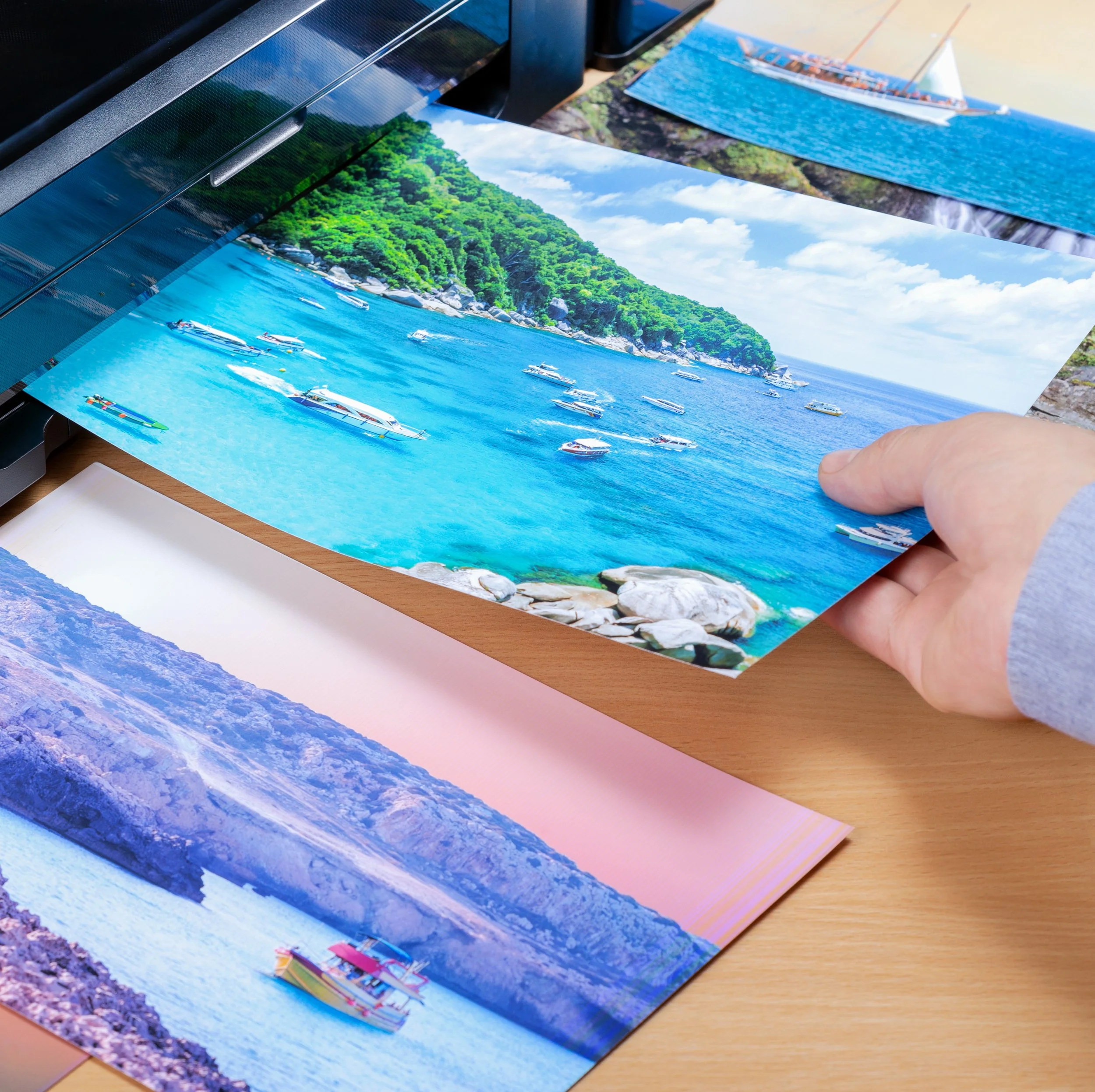I'm one of those photographers who thinks that a photo is only truly complete when it becomes a print. There's something very special about holding a piece of art in your hands, a tactile experience very different, and in my opinion, superior to seeing it on screen.
I was recently listening to an interview with Tokyo based wildlife photographer Martin Bailey and he was raving (again) about Breathing Color paper and canvas. I went online and tried to place an order as they only sell direct, but when the company got back to me, shipping was going to be more than the cost of the paper. I live in Canada, and I guess sending stuff from parts of the USA is akin to launching a rocket to Mars. That's not true for Red River Paper, they process orders and all the costs are included at excellent pricing, but I digress.
A tech support person at Breathing Color advised me that Amplis in Canada sold their paper direct. Amplis has an online store so I went to it. No Breathing Color. It only appeared on the Dealer secure site. I wrote back to Breathing Color and told them their Canadian option seemed broken. The same young gent contacted Amplis and I was contacted in short order by Phil Neilsen and Pat Cameron. Phil sells for Amplis. Pat is on the order desk. Both were very helpful. Pat processed my order and I picked it up, with only a couple of hiccoughs, the same day.
I ordered five 17" x 20' trial rolls. The new metallic paper was not in stock but the others were so I collected them. Lyre Canvas, Crystalline Satin Canvas, Vibrance Matte and Optica One were my selections. This morning I had some time and so unloaded the default roll of Epson Professional Premium Lustre that I typically have queued up in my printer. After loading the roll of Crystalline Satin, I set to making some prints.
I love the Epson 4900 but it has its quirks. Single sheet canvas handling is one of them. Once I got the roll loaded and feeding properly, (more challenging than it should have been), I read the insert that came with the paper. Breathing Color not only supplies setup instructions for Windows and Mac for their papers, they include screenshots to help you out. Of course the screenshots did not match my world exactly, but there was more than enough information to create a printer preset for the roll of Crystalline Satin.
One of the other things I really like about Breathing Color is that when you go to download their ICC profile for a paper, the download contains all their ICC profiles in a single package along with an aliased installer to make installing them completely painless. Every other paper company SHOULD learn from this simple and very customer-centric step.
Lightroom 5.2 was used to make my prints. Two shots were in colour, shot on a Canon 1D Mark IV with the 100-400 and 1.4x teleconverter, the first of a giant panda and the second of an african rhinoceros. The third was a scan of a 4x5 TMAX 100 negative shot with a Nikkor 210mm on my Sinar P that I had processed earlier this week. I thought it would be nice to try these different subjects on canvas.
Despite a first time feed error, once I unloaded and reloaded the canvas, the Epson 4900 did the job I bought it for. It produced great prints in a reasonably timely fashion. I liked very much that the ICC profiles worked flawlessly with Lightroom's proof print function and that I could see what the prints would look like before printing. I have had issues where this did not work properly with other vendor's ICC profiles. I keep my displays calibrated using a Color Munki Photo so I got out what I saw on screen after allowance for reflective textured media vs backlit display.
The canvas is very thick and Epson advises not to use the built-in cutter for canvas on the 4900. I set the printer for no cut, and learned how to advance and then withdraw the paper once I cut it with an X-Acto after each print. The 4900 does a great job of prepping the roll and my not straight cuts caused no issues with the next prints.
Once the pigments had dried for a while, I sprayed each print with Hahnemuhle's spray canvas protector. You have to do this outside unless you want to go on a coughing jag. Once the varnish was dry enough for handling, I took a tip from friends Kathy Constantinou and Simeon Tse and mounted the prints on foam core.
My usual response to printing is to frame stuff, but I had done an experiment with mounting a Moab Metallic Pearl print on foam core and I liked the outcome very much. I have not yet bought gallery mount kits for canvas, (next week, Amplis has some great kits), so I thought, what the heck? I sprayed the back of the canvas with 3M photographic spray cement and then placed the prints on the foam core. I covered the print with parchment paper and used a rubber roller working from the centre out to lay the canvas down on the foam core and roll it flat. It worked surprisingly well, so a big thanks to Kathy and Simeon for their initial coaching. Once the glue had set up a bit, I used a steel straight-edge and the heavy X-Acto to trim away the excess foam core. I bought a self-healing cutting mat at the Currys Art Supply store and it's perfect for this kind of work.
The canvas looks awesome. Colours are bright, gamut is excellent and the canvas texture is very appealing without degrading the image quality in any way. The black and white print from the Sinar looks stunning on the canvas. I spent a lot of time making the shot and while there is always room for improvement, I love that I can see ten zones in the image. Canvas is the perfect media for this kind of work.
I have not yet tried the other Breathing Color papers, but my first experience with their Crystalline Satin has been awesome. They make a really fine product and handle the software end better than most paper companies. Now that I know the trick to ordering the paper in Canada (call Pat at Amplis direct), I'll buy more in the future.
























